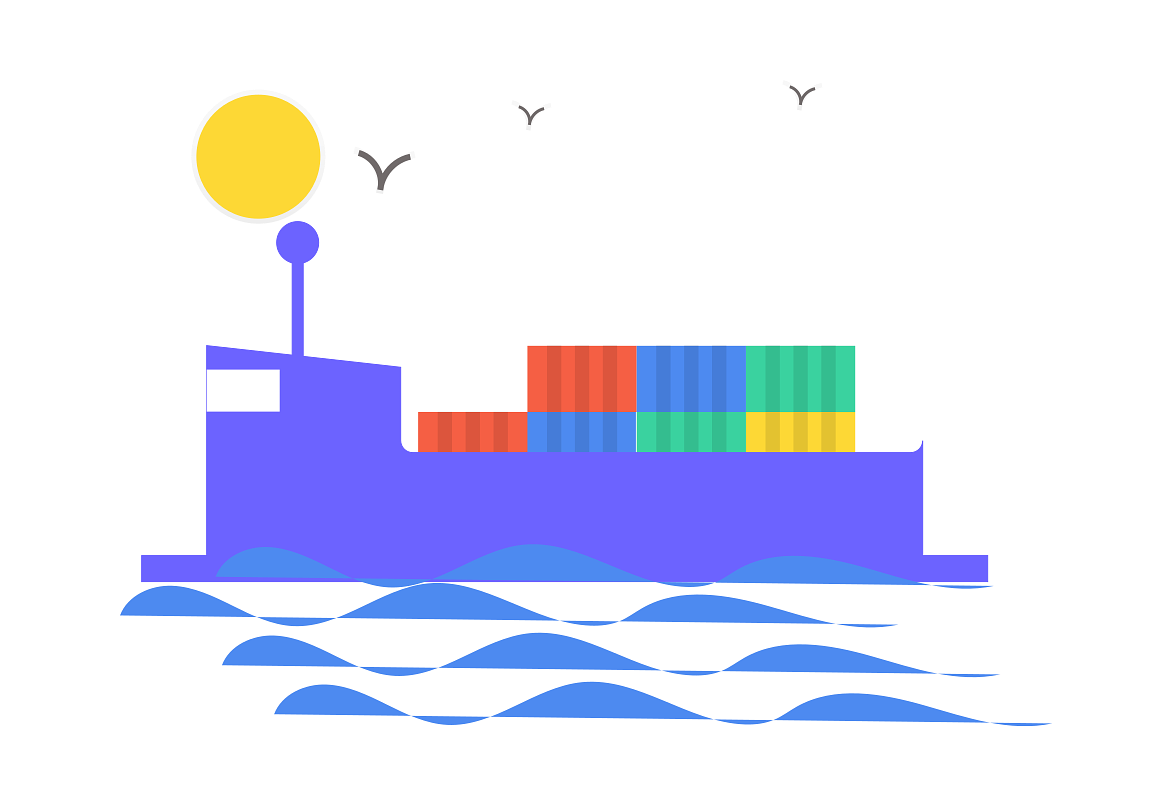In 2019, my team was challenged with re-platforming an inventory management system (IMS). The previous system was the typical enterprise mash-up of legacy mainframe software and Linux VM deployments with applications written in an object-oriented language. Obviously, DB2 is also involved somewhere, or everywhere. Our challenge was to re-platform the IMS with microservices that would run in Kubernetes. Microservices is a loaded word that could mean a variety of things, but the 12 Factors by Adam Wiggins is as close I can come to a proper definition of the concept. In our architecture, the applications would be developed in multiple code repositories, and each repository would have a CI/CD pipeline to build docker containers. Finally, these containers are blasted out into Google Kubernetes Engine using modern tools.
 Container ship/undraw.io
Container ship/undraw.io
The container has become the fundamental unit of deployments in cloud-native software. Everything must be containerized before shipping in the cloud. However, the IMS that used to be 1 big “enterprise” application was rewritten as 8 services and a few shared packages. Working with several code repositories, each having its own CI/CD plumbing, quickly becomes an organizational challenge. Features might get implemented simultaneously by various members of the team, leading to a cognitive dissonance within the service. A good rule to keep in mind is Conway’s Law which posits that the structure of the organization will shape its products. To improve our systems, we needed to synchronize our communication channels, and delegate clear responsibilities. Once our team was effectively communicating and coordinating the work, we began to make meaningful progress in delivering key features.
The microservice architecture still created a lot of sourcecode in our repositories. This is helpful because we can balance and assign work to targeted components in the portfolio without needing to apply changes to other parts of the IMS. But not everything in software development is suitable for this pattern. Specifically, services commonly contain cross-cutting concerns such as database driver configurations, middleware boilerplate, and even custom things like transaction handling, logging, and asynchronous behavior. Many of these concerns arise in each service, and since we are developing many services in parallel, redundant code quietly became an issue. It is difficult to argue against this anti-pattern because at first it appears to play in favor of productivity. Developers copy some configurations and utility classes into multiple services. However, these manual copies create a debt by slowing down your ability to adapt them.
For example, suppose you had a implementation of deadline propagation in a service with some AOP hooks and configuration. Then this source was copied and pasted into several other services. Later during a performance test, your team sees the deadlines don’t work as expected when a legacy system has an unexpected time format. Your team could choose to pickup the edge-case by altering the design to account for another format, or you can hedge against the legacy design by instituting a broad default case. Either change requires you to update the deadline module, but this means you will need to find and replace the implementation in each service. Of course, this is only an example, but in many organizations this flawed process is prevalent.
Instead of “borrowing” source through copying, sharing it with modules creates a flexible codebase, capable of withstanding the ubiquity of microservices. We began to move cross-cutting concerns into extensible, minimal packages, and then import them back into the service through the build system and middleware. Reusable code became dependencies which were tested and scaled independently. New features could be intelligently versioned into the build artifacts. Following this practice, the microservice source transitions from many silos to a fabric, joining the enabling technologies with business requirements. The bottomline is that in order to scale microservice architecture, common features should all be abstracted out wherever possible. Then the microservice binds together common features from libraries and adds just enough functionality internally to accomplish a narrow scope of business requirements. The drawback here is creating a deep stack of dependencies that implicitly couple the services depending on them. With versioning and thoughtful design, we can maintain the common feature libraries without breaking the apps. In fact, directing time to these activities drives solutions to scale more so than the effort needed to maintain an armada of microservices unrelated codebases and bespoke implementations of payload deserialization.